Anagama in Shigaraki
- Date: 2023-05-16
- Tags: #pottery #blog #anagama #woodfiring
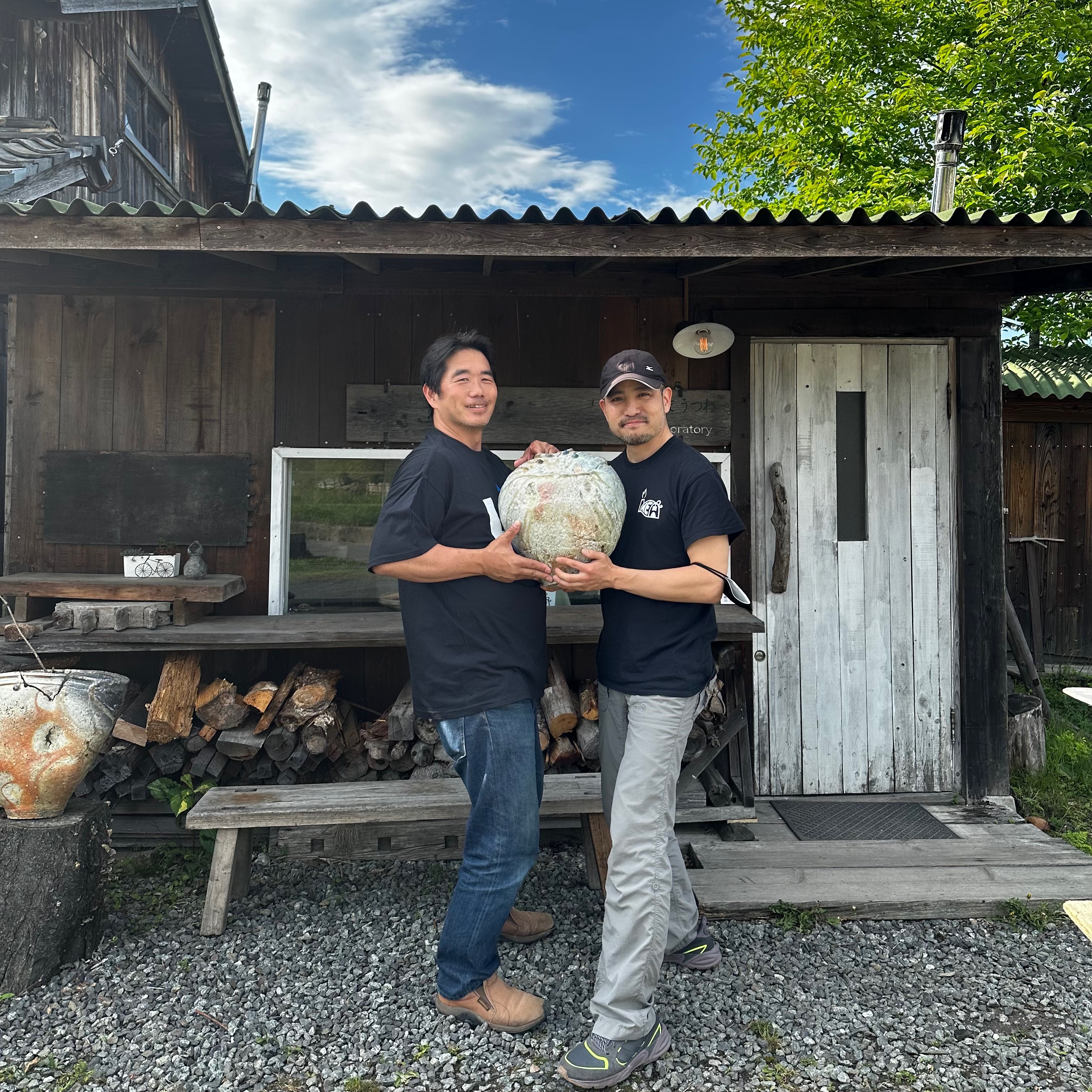
I have been exploring various firing methods, including electric, raku, gas, microwave, and wood firing. Each method has its own purpose, and I have come to appreciate them all. Among them, firing in anagama kilns has been the most challenging yet rewarding experience. In my initial wood firings, I glazed all of my pots. However, after the first firing, I noticed that the natural wood ash contributed more to the aesthetic than I had expected. Since then, I have been experimenting with using less glaze and leaving some pots unglazed. As I went through more firings, I realized that the unglazed pots revealed unique characteristics based on the kiln's location. However, I also wanted to avoid them all looking too similar in brown tones. When I discussed this with my instructor, he pointed out that the fact that they seemed similar was actually a good thing, as many people are satisfied with the experience of wood firing alone.
To address this, I started focusing on the forms and the clay body/slip, aiming to create fundamental differences in my work. It was around this time that I came across a wood fire potter named Nozomu Shinohara on Instagram. While he gained popularity for his wood chopping clips, I soon realized that he handles every aspect of his pottery himself. His signature works are large-sized jars made from wild clay sourced from Shigaraki, which he fires in anagama kilns. These jars make a powerful impression with their running lines formed by natural wood ash glaze, creating aesthetically rich surfaces. Observing Shinohara's work gave me valuable insights and inspiration, as he demonstrates a high level of control over the anagama firing process.

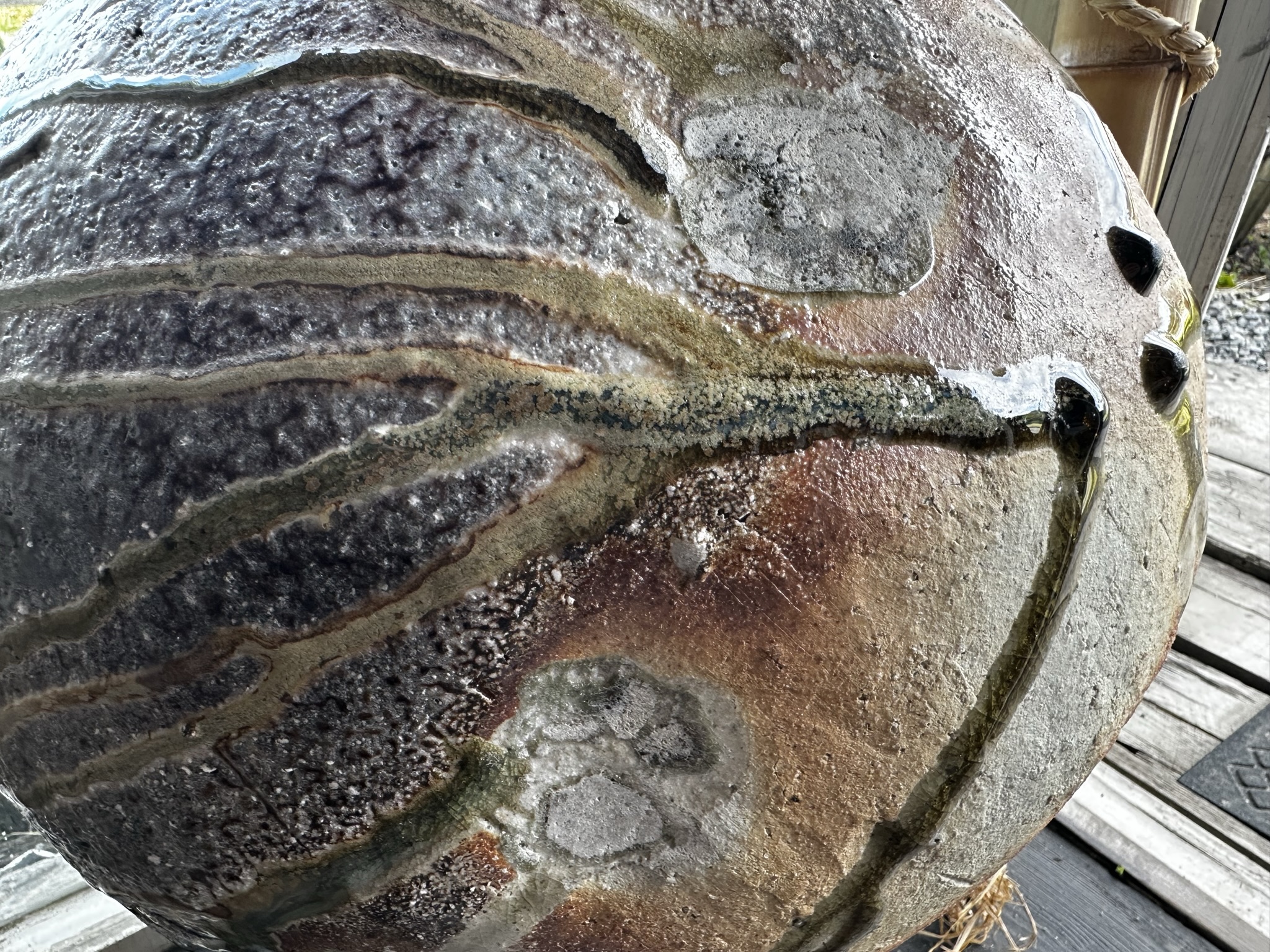
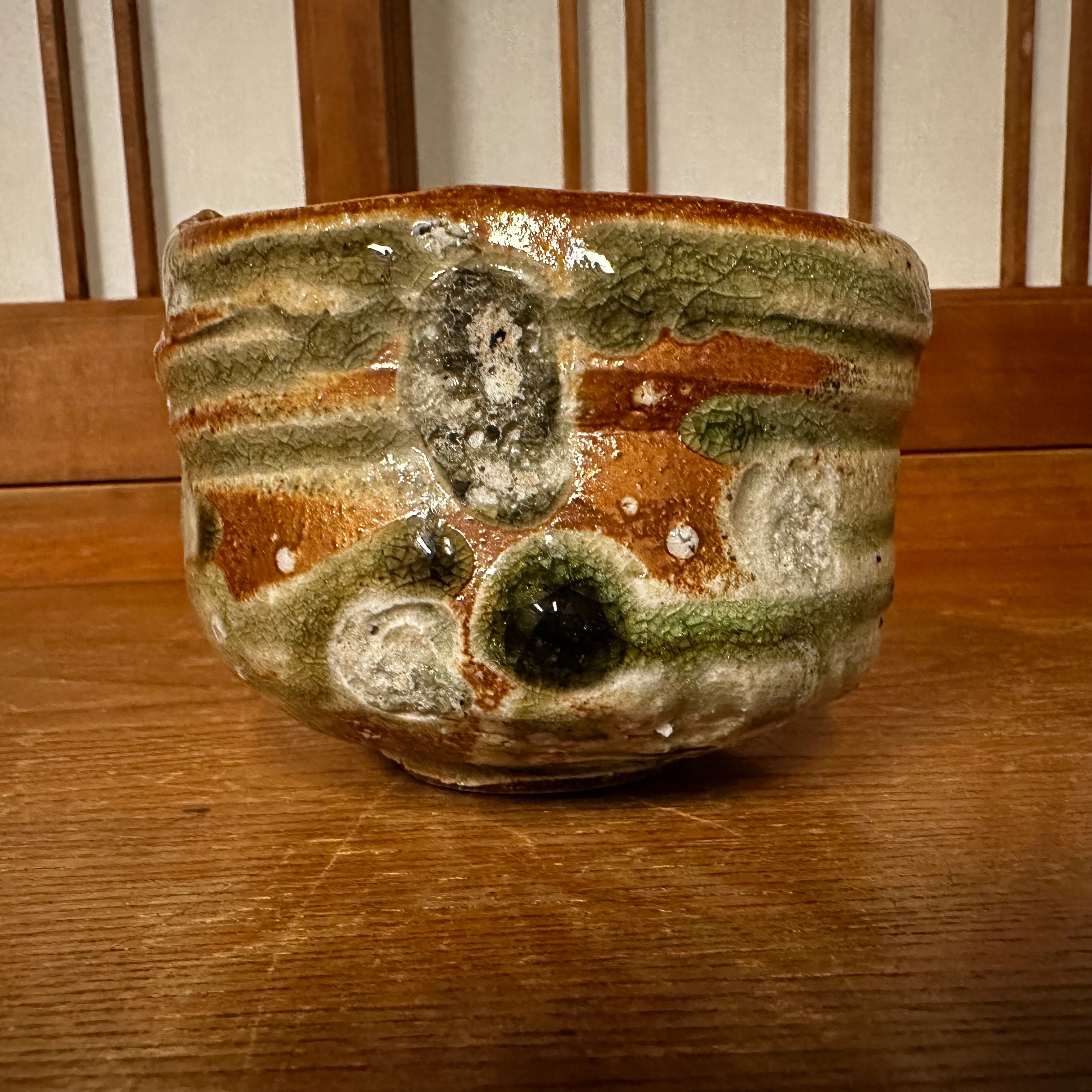
Learning
It's fascinating to discover that Shinohara has his own podcast series called "Anagama Radio," which is likely the only podcast dedicated to discussing anagama kilns in the world. Despite being born in an urban area of Osaka and having no background in ceramic art within his family, he was drawn to pottery after watching a potter's demonstration on TV. He started working as a production potter after graduating from high school. His comprehensive explanations and discussions reflect his journey of learning from scratch, and I greatly admire individuals like him who are passionate about sharing their knowledge with others.
Shinohara also shared a book called Wild Clay, written by Shibata, who relocated from Shigaraki to North Carolina. Intrigued by the book, I purchased a copy. When I shared it in the studio, one of my instructors mentioned having access to a private beach where clay layers are exposed. She kindly provided me with a few chunks of clay, which I used for testing and as slip. Although my endeavors are on a much smaller scale compared to what potters in Shigaraki do, I have begun exploring this direction.
I discovered that Shinohara's work is exhibited in a gallery, so I decided to visit and see his pieces up close. To connect with him, I reached out through a message before returning to Japan. My intention was simply to have a conversation with him and to view his artwork in person.
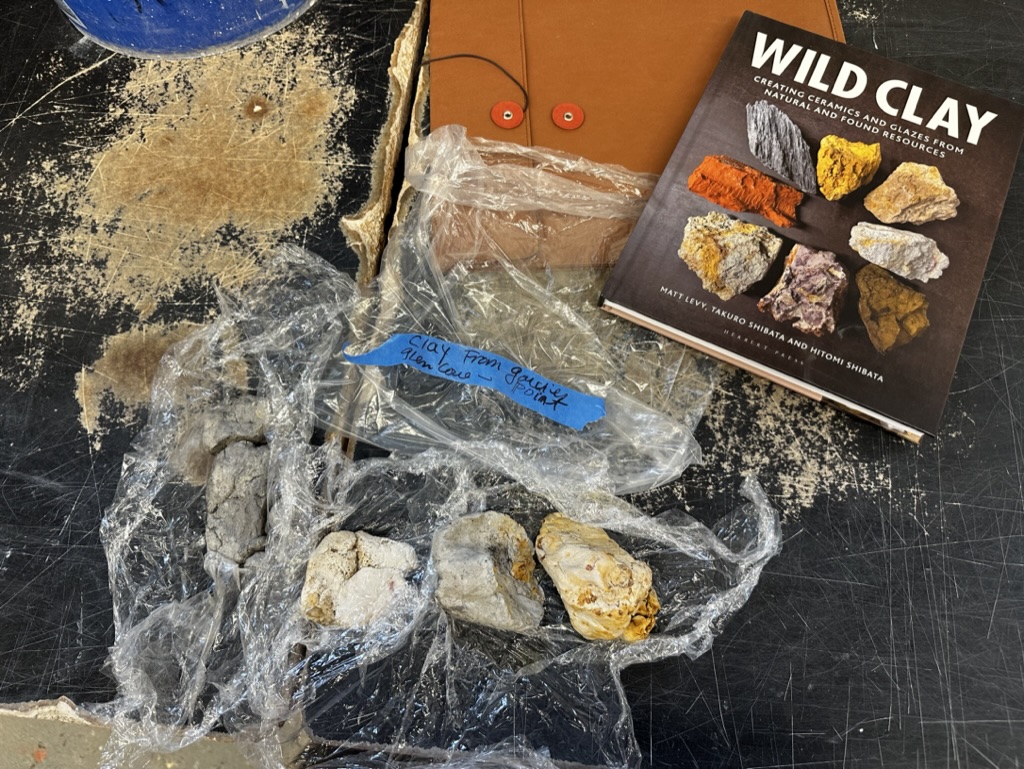
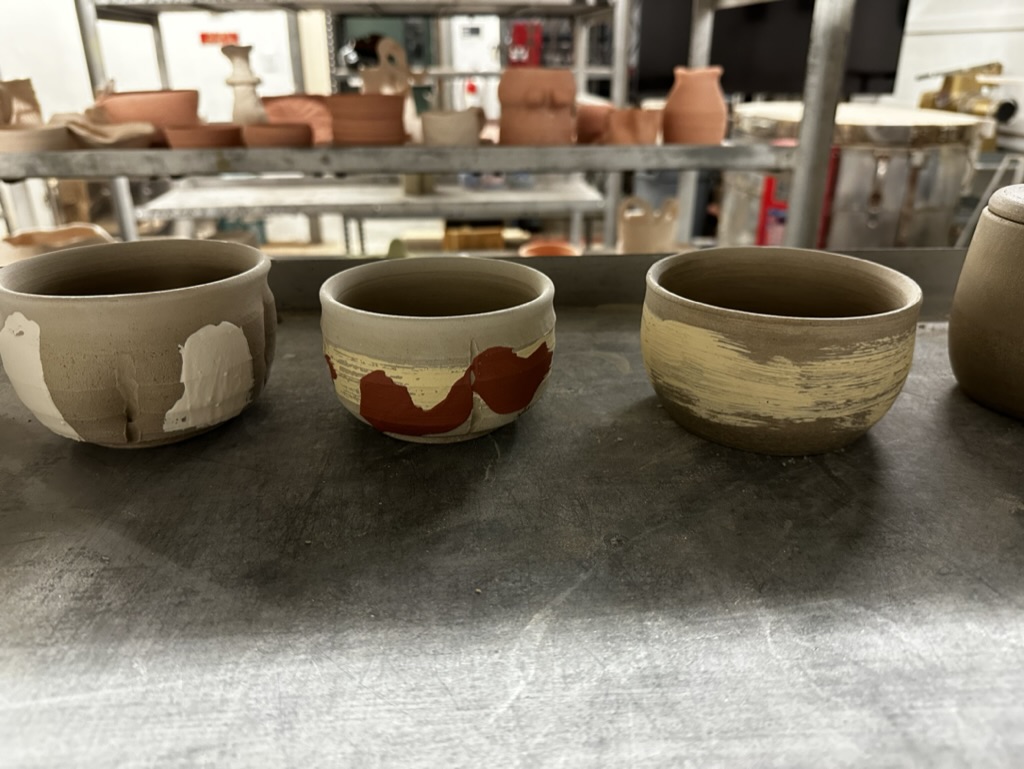
Visiting Shigaraki
Shigaraki proved to be a wonderful place to visit after our family event in Kyoto. Upon arrival, Shinohara warmly welcomed me into his studio. His wife runs a cafe/restaurant, and the lunch they served was truly amazing. I spent nearly half a day with him, during which he took me to various places. He gave me a tour of his studio and then led me across the street. There, we encountered exposed layers of rough clay along the hill, remnants of an old anagama kiln. As we walked along, he pointed out numerous ceramic pieces scattered on the ground. These included ancient wadding, shelves, saggars, and broken pots. The thin, white broken pots resembled Kyoyaki and were distinct from the contemporary Shigaraki style, indicating that Kyoto served as the main market where a more sophisticated style was preferred.
Shinohara explained that Shigaraki had adapted different styles throughout history due to the wide variety of wild clay available. The layers of Shigaraki clay were formed by the ancient Biwa Lake approximately 3 million years ago, situated north in the current era. He further elaborated that the clay is relatively young in the geological scale, which accounts for its rich profile.
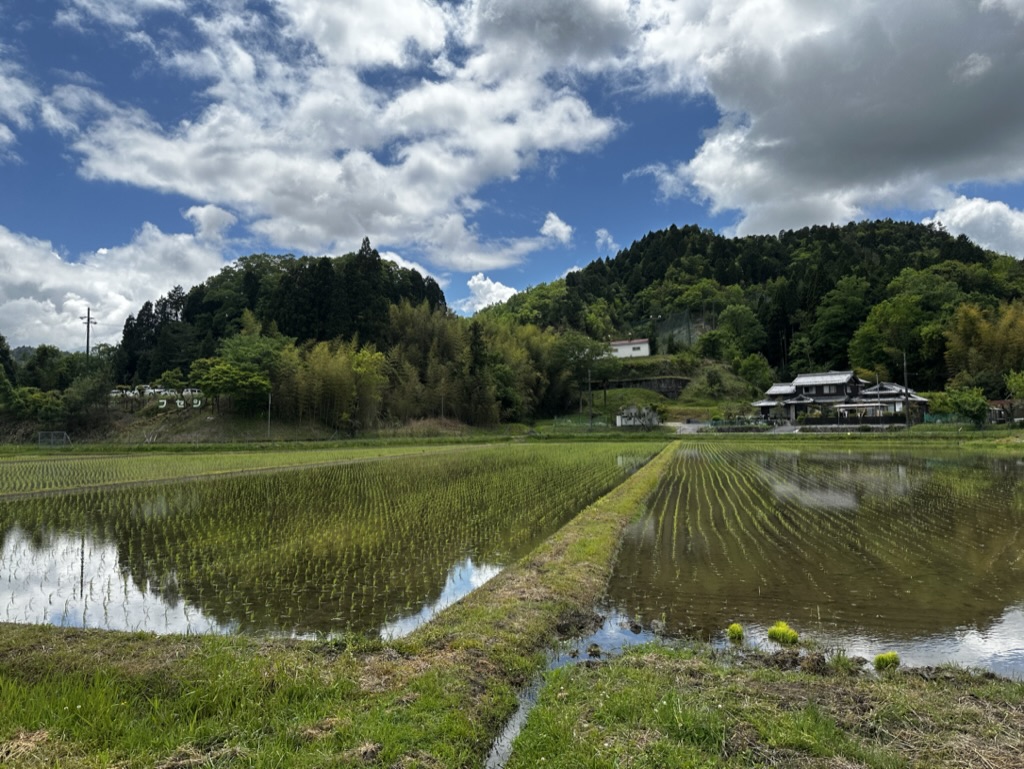


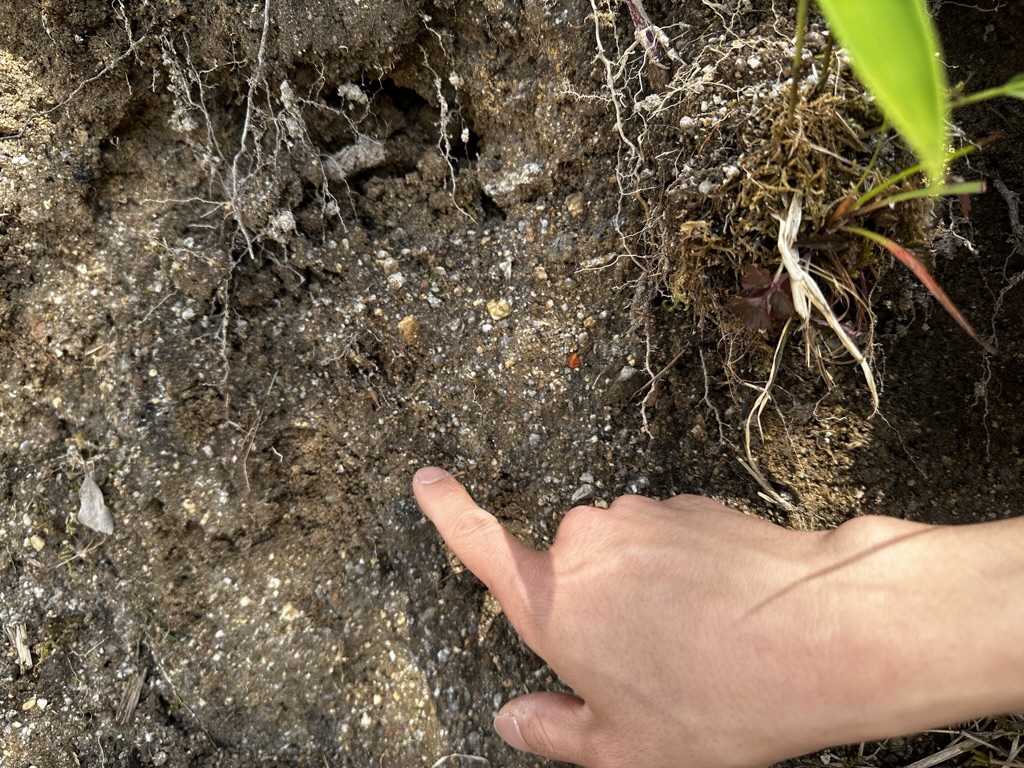

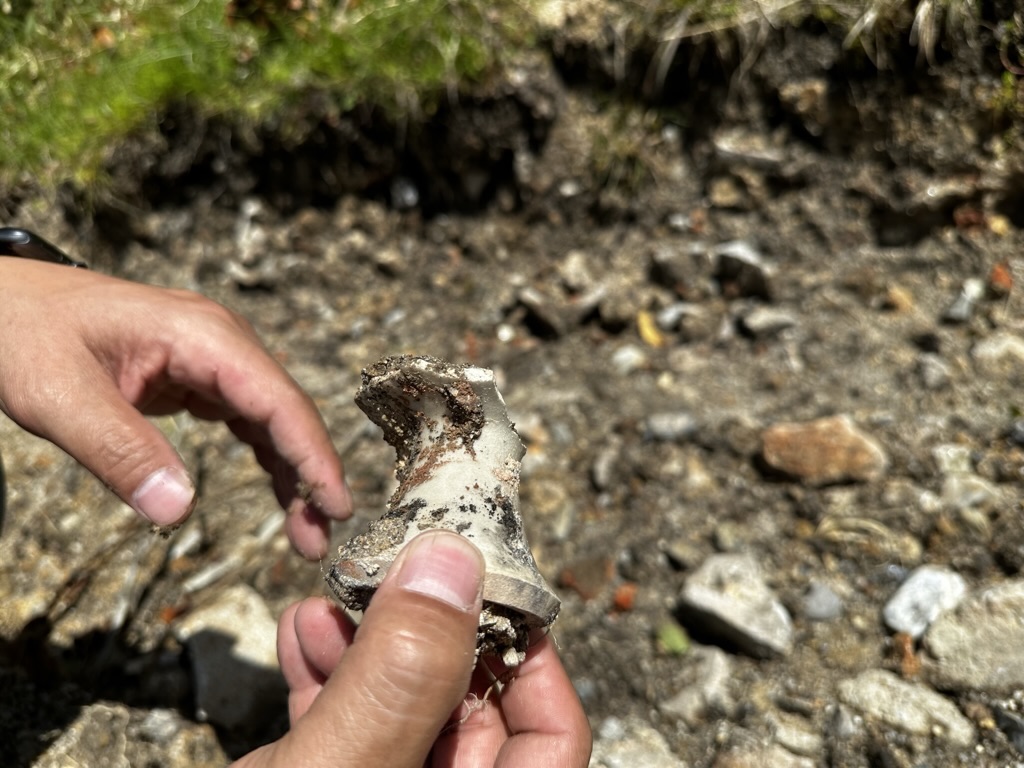
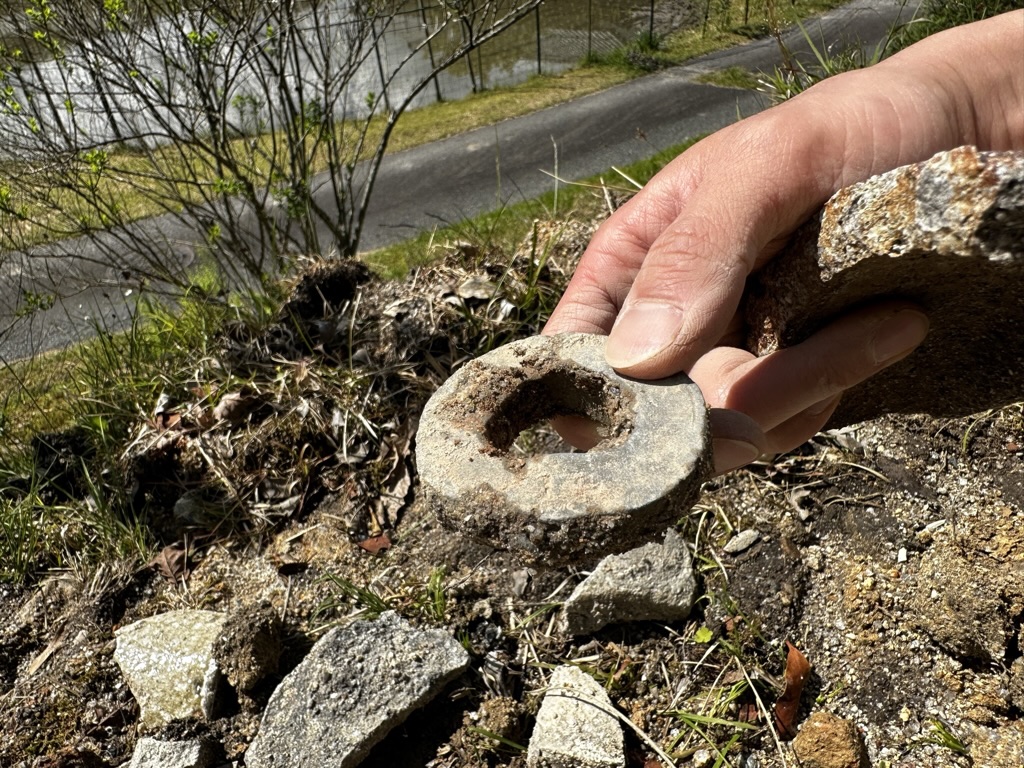
After lunch, he took me to Togei no Mori (陶芸の森) a.k.a Shigaraki Ceramic Cultural Park. It is a large size ceramic facility owned by the government, and they provide various equipments for potters; such as, anagama, gas kilns, museum, and artist residency buildings. He walked me through various anagamas. One in this piccture is small one but has certain angle. Another one had divider wall in between in order to distribute heat. There are a lot of other types, but I scanned 3-D of those small ones.
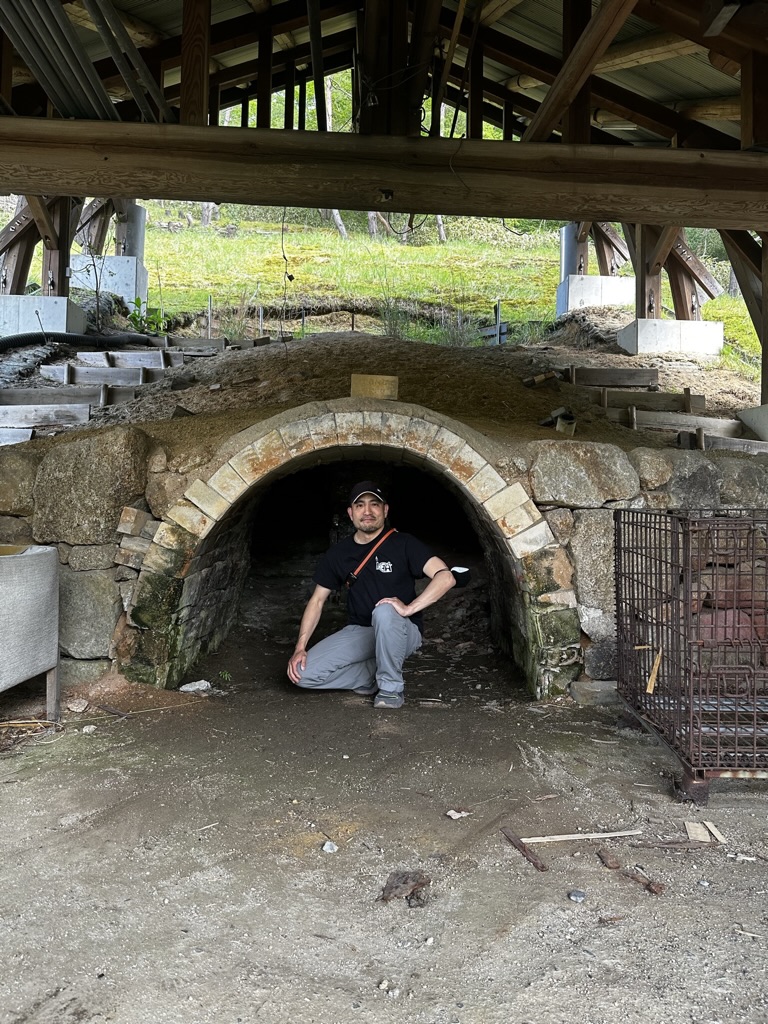
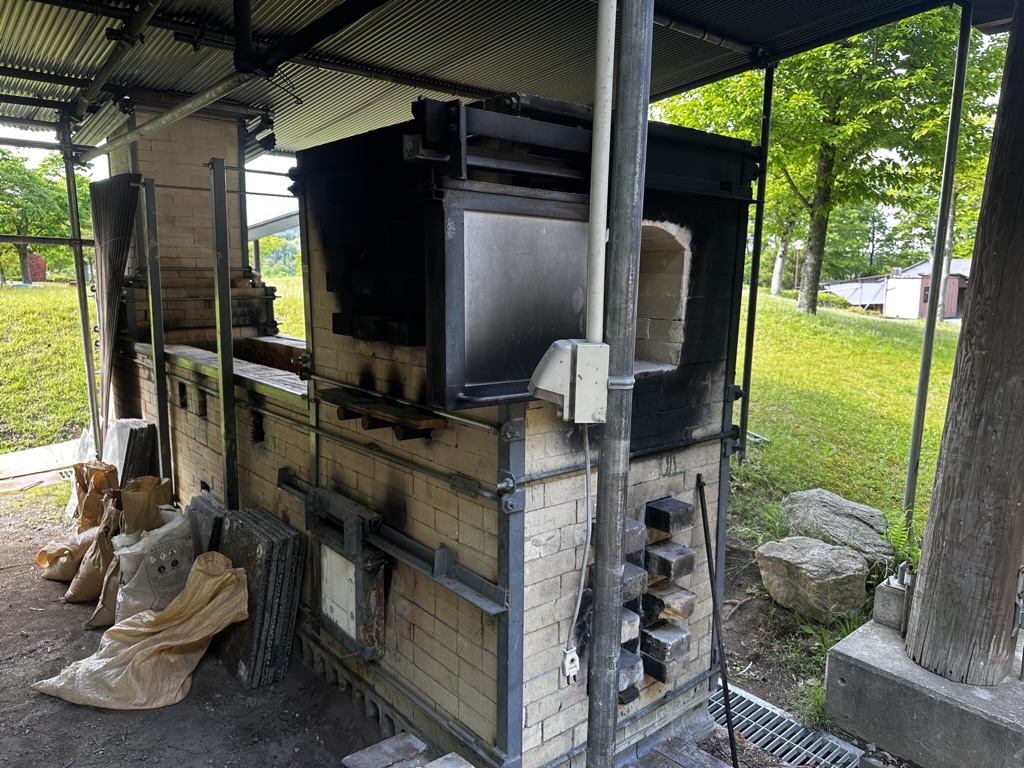
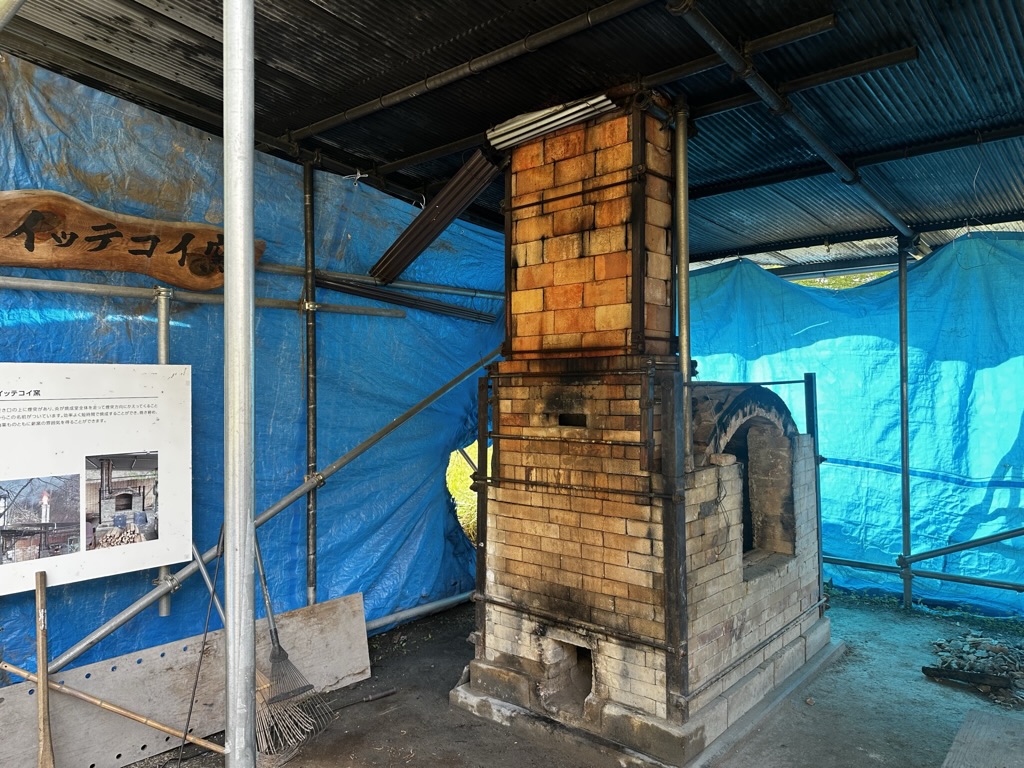
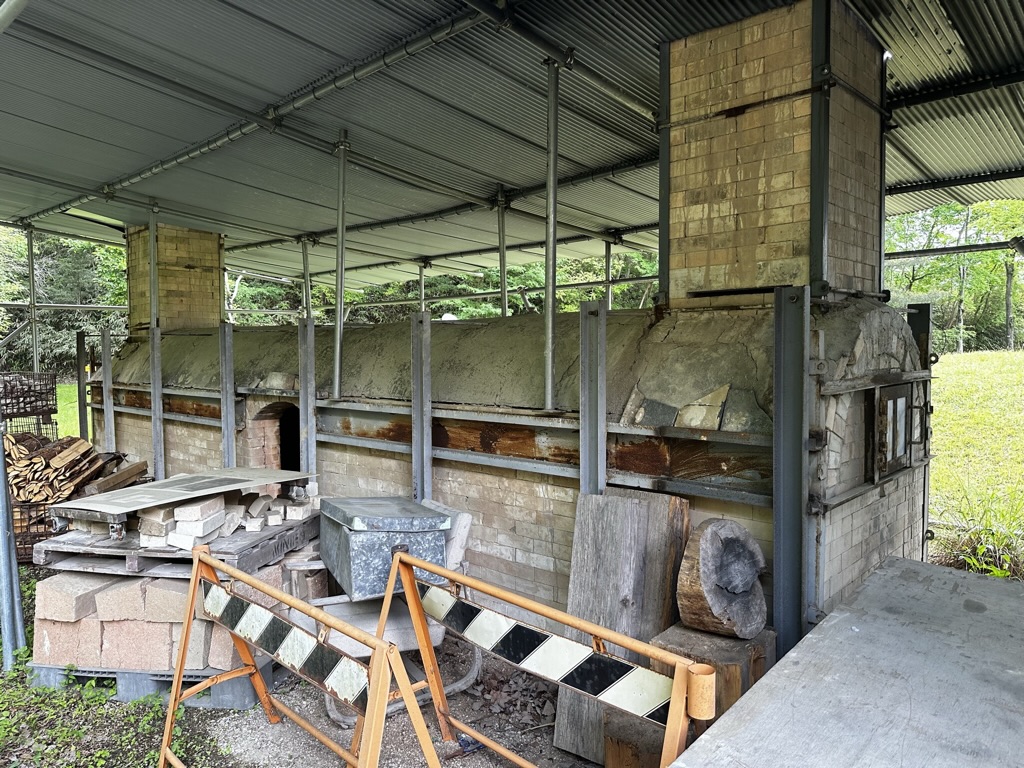
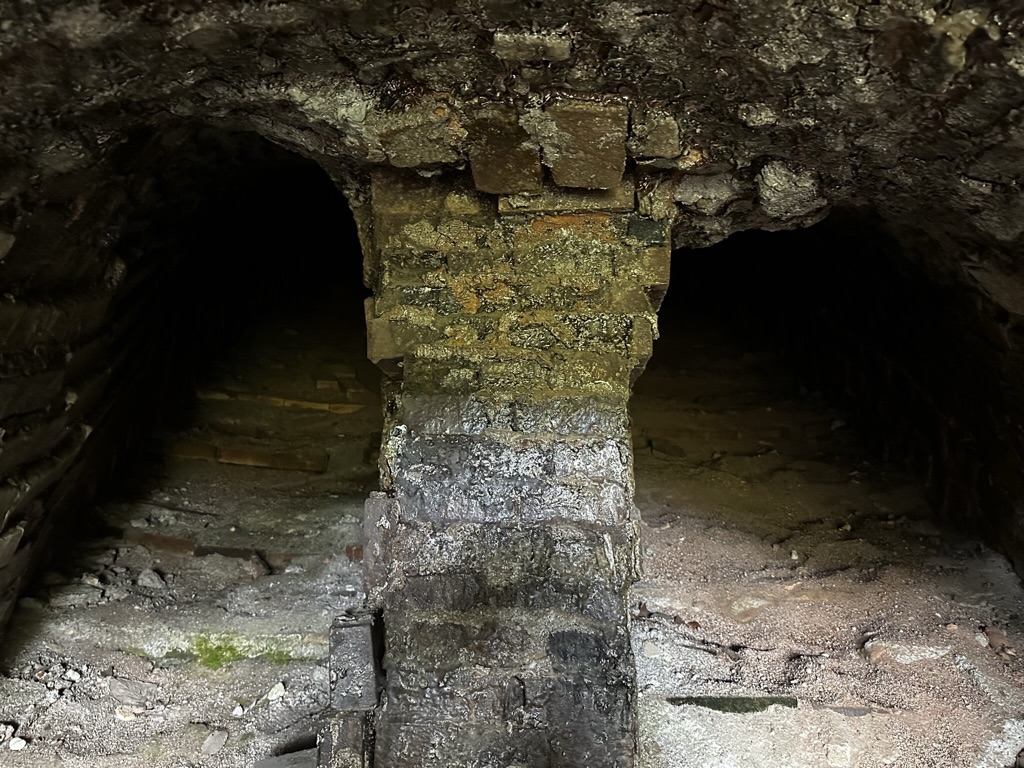
Anagama in 3-D
Thoughts
In closing, I would like to jot down my thoughts in random order. I would like to cover those topics when I have a chance. I'll leave rooms below
(TBA)
References
- 信楽焼 陶芸家 篠原希 陶工房 篠原 - Shinohara's Website
- 信楽の陶芸家、穴人(あなじん)登場!マニアックすぎる『穴窯ラヂオ』はじまるよ〜 - 日本文化ラジオ | Podcast on Spotify - His Podcast about Anagama
- The Shigaraki Ceramic Culture Park | We provide a site for creativity.Artist-in-Residence, Ceramic and Art Complex in the Shigaraki
Those references about geology reports in Shigaraki. I looked into those papers before going there.

